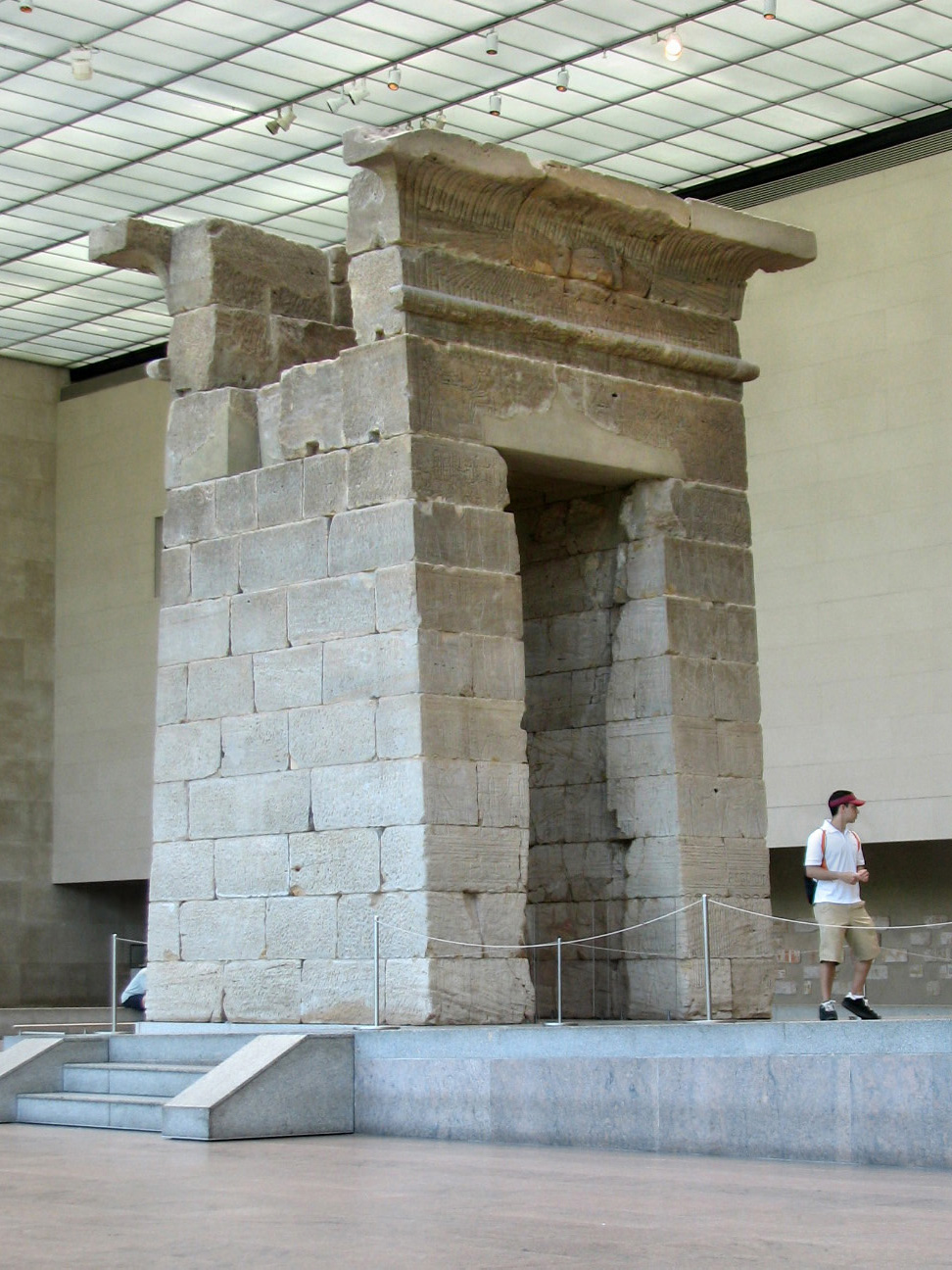
The Temple of Dendur
Egyptian; Nubia, Lower Nubia, Dendur, 15 B.C.; Roman Period, Augustus Caesar
Aeolian Sandstone; L. from gate to rear of temple 24 m 60 cm (82 ft.)
Given to the United States by Egypt in 1965, awarded to The Metropolitan Museum of Art in 1967
and installed in The Sackler Wing in 1978 (68.154)
The Brooklyn Museum has a lantern slide showing this temple in situ.
I tried to minimize the cracks of the lantern slide:


All the above photos © Joan Lansberry 2008
All the below photos © Joan Lansberry 2005
|
From Museum Website: "Egyptian temples were not simply houses for a cult image but also represented, in their design and decoration, a variety of religious and mythological concepts. One important symbolic aspect was based on the understanding of the temple as an image of the natural world as the Egyptians knew it. Lining the temple base are carvings of papyrus and lotus plants that seem to grow from water, symbolized by figures of the Nile god Hapy. The two columns on the porch rise toward the sky like tall bundles of papyrus stalks with lotus blossoms bound with them."


"On the outer walls between earth and sky are carved scenes of the king making offerings to deities, who hold scepters and the symbol of life." 
"In the first room of the temple, reliefs again show the "pharaoh" praying and offering to the gods, but the relief here is raised from the background so that the figures can be seen easily in the more indirect light. From this room one can look into the temple past the middle room used for offering ceremonies and into the sanctuary of the goddess Isis. The only carvings in these two rooms are around the door frame leading into the sanctuary and on the back wall of the sanctuary, where a relief depicts Pihor worshiping Isis, and below – partly destroyed – Pedesi worshiping Osiris." |

The soft sandstone is vulnerable to graffiti...

Thoth, god of communication



